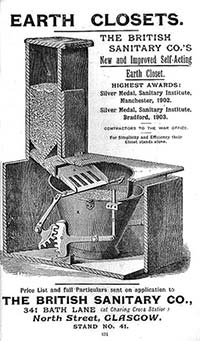History Society Report
Be thankful you can flush.
A tale of the Great Stink!
Speaker: Tony Boughton
Thursday, 16 March 2017
 In the summer of 1858, the city of London came to a standstill. And what brought London to its knees was the stench emanating from the River Thames. The river was literally choking on raw sewage.
In the summer of 1858, the city of London came to a standstill. And what brought London to its knees was the stench emanating from the River Thames. The river was literally choking on raw sewage.
“Near the bridges the feculence rolled up in clouds so dense that they were visible at the surface… the whole river was for the time a real sewer.”
Michael Faraday 1855 in a letter to the Times.
Tony Boughton gave Hebden Bridge Local History Society an insight into the problems caused by the rapid growth of urban areas in the 19th century, London in particular, and how the Victorians dealt with the problem of cleaning up the rivers, though not always in an organised manner.
At the beginning of the 19th century, only 20% of the population in England lived in towns and cities. Towards the end of the century, this had risen to 80% of the population living in urban areas. This caused overcrowding, dreadful living conditions for the poor, but put a great demand on water supplies and the disposal of waste of all kinds. Within London up to the middle of the century, the lack of a centralised authority meant that there were many different designs of sewerage systems and not all worked in conjunction with neighbouring schemes but most allowed waste material to flow directly into rivers.
Between 1830 and 1866 there were several outbreaks of cholera, which, through various studies, led to the rightful conclusion that the illness was transmitted through the water supply, but this theory was not accepted until the latter part of the century. Most dwellings had rudimentary ash or dry soil toilets but the more affluent people were beginning to install ‘water closets’ in their houses which only added to the waste that reached Britain’s rivers.
In 1858, during that very hot summer, the stench from the river became unbearable. Even the Houses of Parliament considered moving their business up river. Parliament finally decided to act. A bill was created, amazingly quickly. This included not only the implementation of a sewerage system that would divert the out flow down river, designed by the Civil Engineer Joseph Bazalgette, but also the construction of embankments along the sides of the river.
It was a massive project that involved 82 miles of intercepting brick lined sewers with outfalls at Crossness on the south side of the river and Barking on the north side. Here there were massive pumping stations with steam engines to aid the discharge of the sewage into the river.
Here in local areas, the introduction of sewerage schemes took a little longer. Local councils had a responsibility for constructing sewerage systems but perhaps because of the local terrain, many houses were still using outside dry soil or ash toilets well into the 20th century.
At the last HBLHS meeting of this season, Rob Trueblood will talk about The Artisan Naturalists. This is on Wednesday 22nd March at 7.30 pm on Wednesday 22nd March, The Methodist Church. Market Street Hebden Bridge.
Details of all the Society’s activities can be found on the website and you can also follow us on our Facebook page.
With thanks to Barbara Atack for this report
See also


